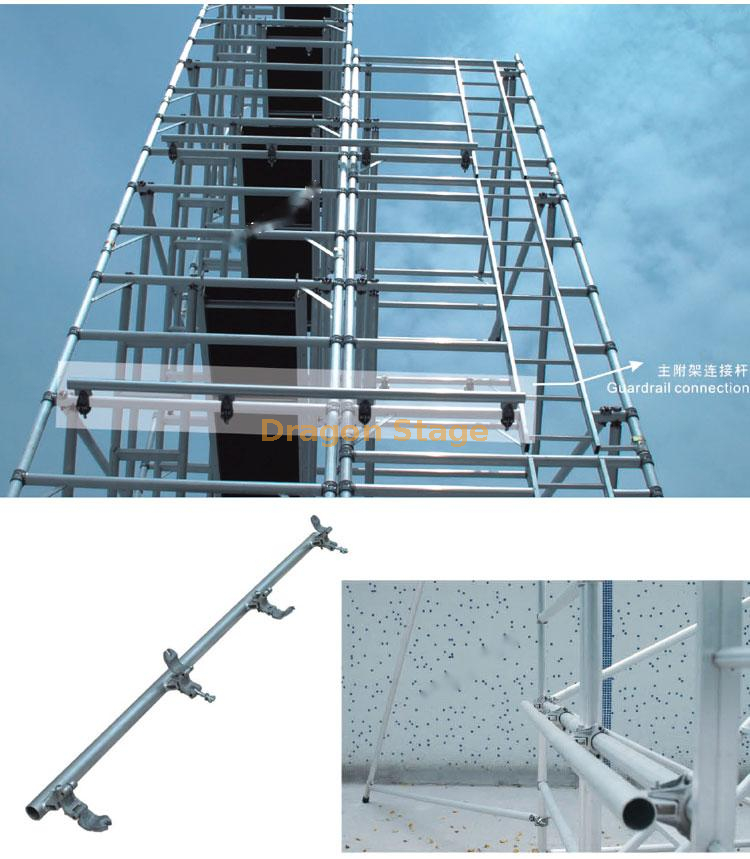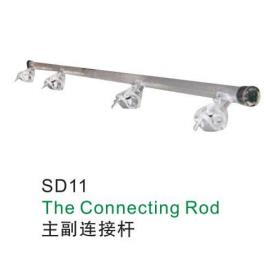
Publish Time: 2023-06-19 Origin: Site

Aluminum scaffolding connecting bars are structural components used in auxiliary scaffolding systems. These bars are designed to connect and stabilize various components of the scaffolding, providing strength and support. The connecting bar length usually matches the width of the main scaffolding plus the width of the auxiliary scaffolding. They attach to the scaffolding frame of every vertical pole with clamps, ensuring a secure connection. It's worth noting that the more connecting bars you have, the tighter the scaffolding towers become, enhancing overall stability.

Auxiliary scaffolding refers to additional scaffolding structures that are used alongside the main scaffolding to provide additional support or access to specific areas. These structures may be required for various reasons, such as supporting heavy loads, bridging gaps, or creating specialized work platforms.
The connecting bars in aluminum scaffolding systems are typically made of lightweight, yet durable, aluminum alloy. They are designed to be easily connected to other scaffold components, such as vertical standards (uprights) or horizontal ledgers. The bars are often equipped with connection points or fittings, such as spigots or pins, that allow them to securely attach to other scaffold elements.
By connecting these bars to the appropriate scaffold components, such as ledgers and standards, auxiliary scaffolding can be constructed to meet specific requirements. This may involve creating additional work platforms, bridging gaps between main scaffold structures, or providing stability and support for heavy loads.
It's important to note that while aluminum scaffolding is lightweight and easy to assemble, it should always be erected and used according to the manufacturer's instructions and in compliance with relevant safety regulations. Proper training and adherence to safety guidelines are crucial to ensure the stability and integrity of the scaffold structure.
FOSHAN DRAGON STAGE
No.7,Xiaxi Industrial Area,Heshun,Nanhai District,Foshan,528241,Guangdong,China.
+86 136 3132 8997
